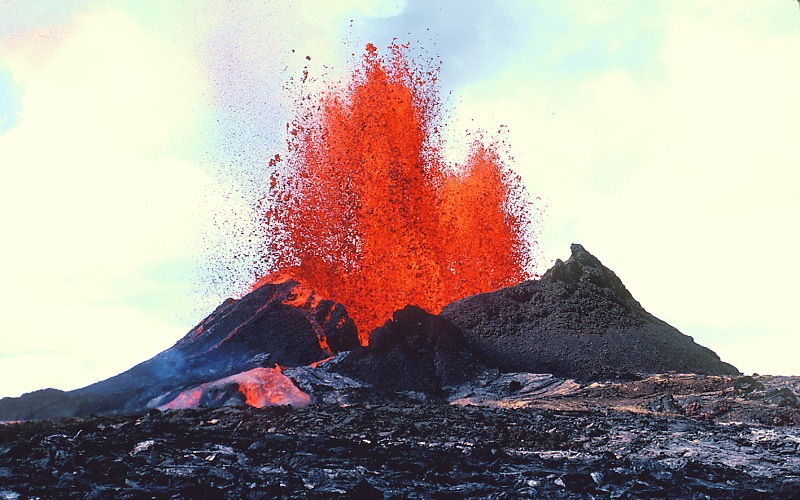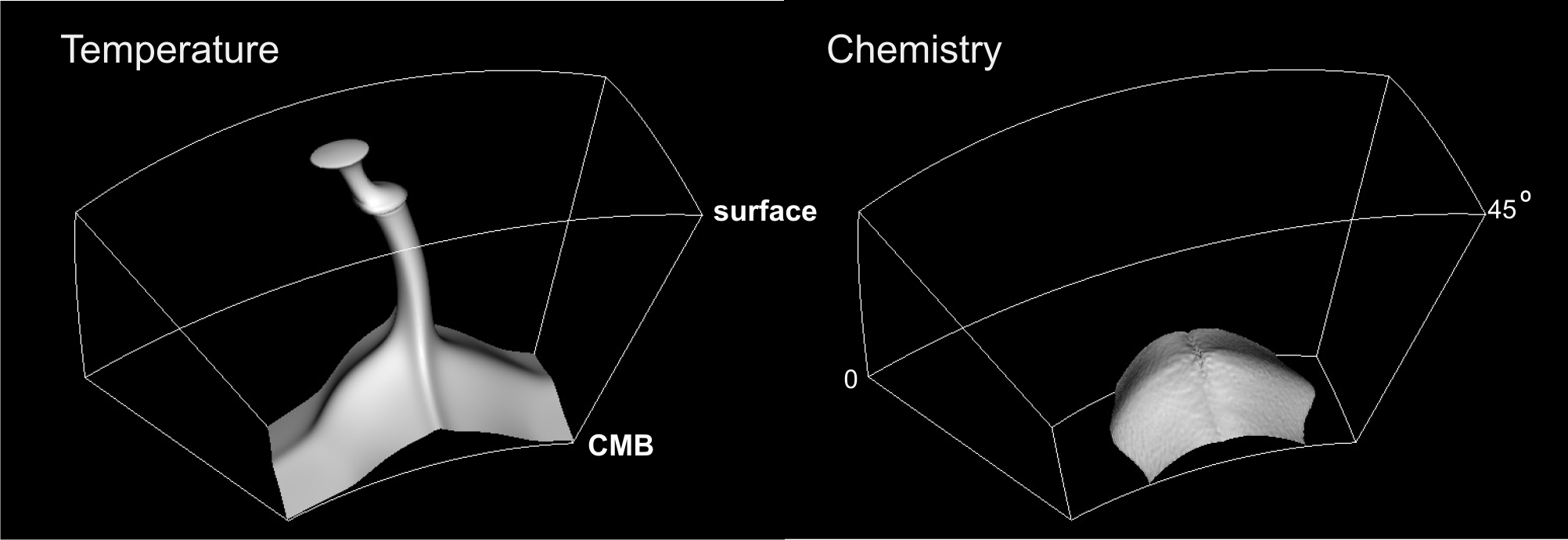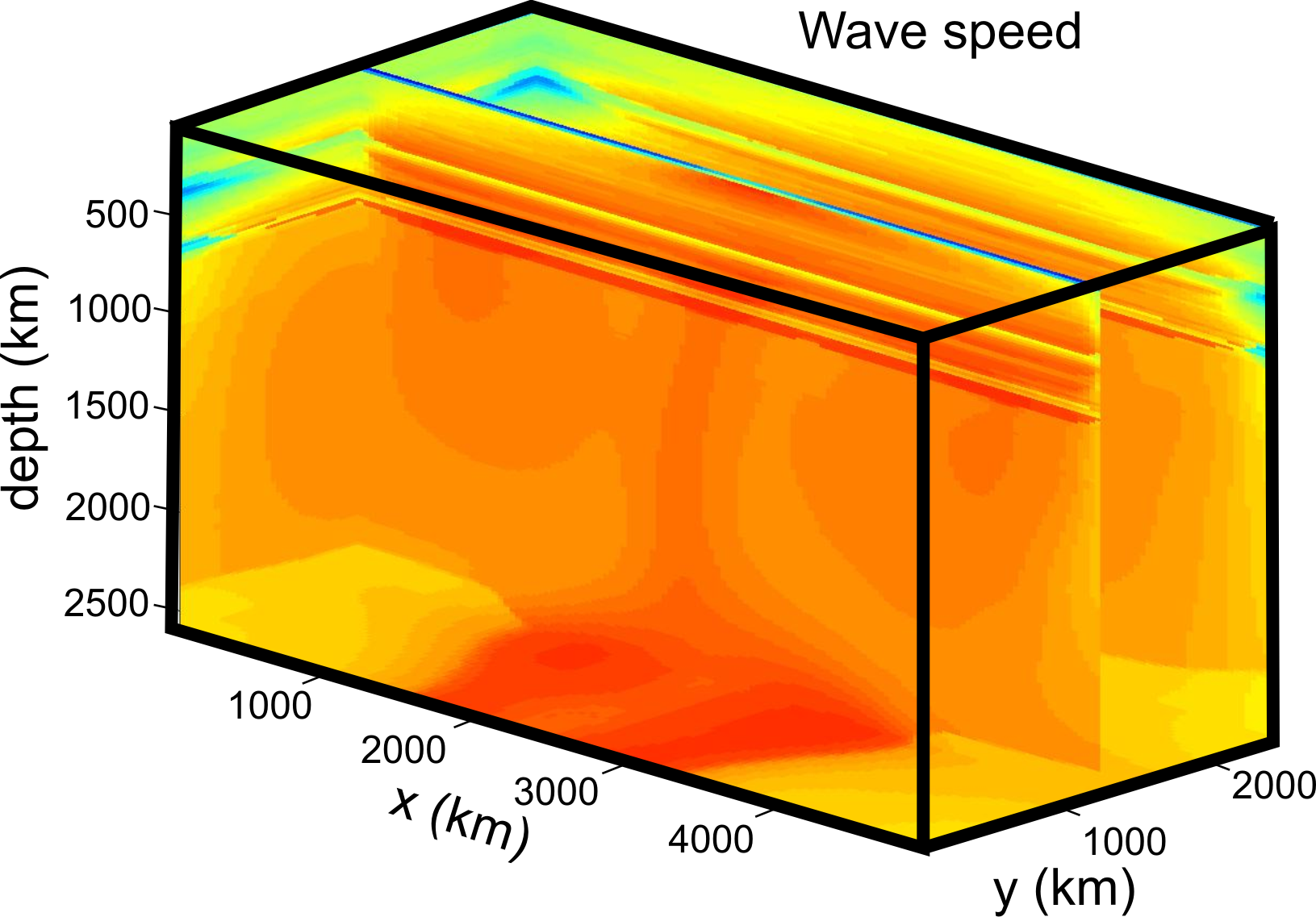

Do thermochemical plumes
exist in the Earth's mantle? - Solving the Enigma
(NWO Vidi grant 2017)
(NWO Vidi grant 2017)
Volcanic eruptions release
vast quantities of heat and gas into the Earth’s
atmosphere and are a major driving force in global
climate. In most cases, these eruptions are concentrated
along the boundaries between tectonic plates and are
associated with shallow melting processes. However,
there are some regions, such as Hawaii, which are far from
plate boundaries yet are extremely active volcanically.
Historically, these regions of prolific volcanic activity
have even been implicated in mass extinction events,
including the loss of the dinosaurs. Why they exist has
been a long-standing enigma. One popular theory is that
Hawaii sits on top of a “mantle plume” – i.e., a narrow
upwelling of hot, and maybe chemically unusual, material
rising all the way from the Earth’s core.
Large earthquakes sending sound waves through the deep Earth can be used by seismologists to build up 3-D images of the sound speed inside the Earth, in a manner analogous to medical tomography. Unlike medical tomography, however, the images in seismic tomography contain many gaps and uncertainties. This makes it difficult and controversial to interpret the images, especially in terms of whether mantle plumes exist.
In my research I combine computer simulations of sound waves travelling through the Earth, with measurements from laboratory experiments on rocks at high pressure, to quantify precisely how rocks with different temperatures and chemistry appear on seismic images. In the Vidi project we will apply these techniques in a revolutionary procedure that uses machine learning to convert the images obtained in seismic tomography into maps which show the likelihood and location of mantle plumes.


Left: Geodynamic model of a thermochemical
plume (image courtesy of F. Deschamps, Academia Sinica
Taiwan) Right:
Plume model converted into wavespeed (image courtesy of
F. Stockmann, University of Münster)
This project runs for 5 years and is associated with one PhD position and one postdoc position.
Return to Homepage
Large earthquakes sending sound waves through the deep Earth can be used by seismologists to build up 3-D images of the sound speed inside the Earth, in a manner analogous to medical tomography. Unlike medical tomography, however, the images in seismic tomography contain many gaps and uncertainties. This makes it difficult and controversial to interpret the images, especially in terms of whether mantle plumes exist.
In my research I combine computer simulations of sound waves travelling through the Earth, with measurements from laboratory experiments on rocks at high pressure, to quantify precisely how rocks with different temperatures and chemistry appear on seismic images. In the Vidi project we will apply these techniques in a revolutionary procedure that uses machine learning to convert the images obtained in seismic tomography into maps which show the likelihood and location of mantle plumes.


This project runs for 5 years and is associated with one PhD position and one postdoc position.
Return to Homepage